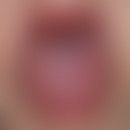Synonym(s)
chronic tactile hallucinosis; delusion of parasitosis; Epizoonoses madness; Hallucinosis chronic tactile; Morgellon infection; Parasite Madness; Parasitophobia; Vermin madness
HistoryThis section has been translated automatically.
Thibièrge, 1894; Meyerson, 1921
DefinitionThis section has been translated automatically.
Psycho-neurotic, delusional idea of being infested by parasites. Characteristic is the rejection of psychiatric help. Skin particles "suspected as pathogens" are often collected in bags (Matchbox-sign) and brought to the doctor's office. It is not uncommon for the delusion to be shared by a second person (folie à deux). S.a.u. Artefacts.
You might also be interested in
Occurrence/EpidemiologyThis section has been translated automatically.
The incidence is estimated at 0.7 - 3.0/100,000 inhabitants/year in the general population.
EtiopathogenesisThis section has been translated automatically.
Occurrence in endogenous and schizophrenic psychoses, chronic hallucinoses with secondary delusions, organic brain diseases (neoplastic, vascular, infectious, degenerative), endocrine / metabolic disorders (hypothyroidism, diabetes mellitus, renal insufficiency, vitamin B12 deficiency, folate deficiency) and toxic conditions with acute delirium (alcohol, drugs), after long-term cocaine abuse.
ClinicThis section has been translated automatically.
Numerous artifacts (elongated scratch marks, roundish ulcers, crusty plaques) impress as a result of fighting the supposed pathogens, often excessive washing compulsion.
DiagnosisThis section has been translated automatically.
Typical are:
- Paradoxical relationship between real skin symptoms and alleged symptoms of complaints.
- Matchbox sign (alleged pathogen components are presented in a box)!
- Previously practiced doctor hopping!
- Strict refusal of a psychiatric consultation!
Differential diagnosisThis section has been translated automatically.
TherapyThis section has been translated automatically.
Take patients seriously! Attempts to convince the patient of the non-existence of the vermin usually fail and are more likely to lead to a breach of trust between doctor and patient (luminary killer). The old principle: "The delusion is unreal, uncritical and uninfluenceable" is still valid. In individual cases an improvement can be achieved in cooperation with a psychiatrist or a psychotherapist.
External therapyThis section has been translated automatically.
- Antipruriginous therapy with e.g. 5% polidocanol shaking mixture (e.g. Thesit, R200 ). Oily and smooth care of the skin e.g. with Linola Fett, Excipial U Lipolotio, Ungt. emulsif. aq., 2-5% urea cream/lotio (e.g. Eucerin 3% urea lotio or Eucerin 5% urea cream).
- Accompanying oil and tar baths (e.g. Balneum Hermal plus, Linola Fett N oil bath, Ichthyol tar bath).
Internal therapyThis section has been translated automatically.
- If necessary, low-dose neuroleptics such as fluspiriles (e.g. Imap 1.5) 1-1.5 mg/week i.m. or pimozide (e.g. Orap) 1 mg/day p.o. over 3 months
- Alternatively Risperidone (e.g. Risperdal) can be tried 2 times/day 1 mg p.o. or Quetiapine (e.g. Seroquel) 25mg - 50mg as starting dose (up to 200mg/day). Subsequently tapering of the dose with outlet attempt and determination of the further procedure according to the clinic.
- Alternatively: Olanzapine (Zyprexa = atypical neuroleptic) at a dosage of 5.0-10.0 mg/day.
Note(s)This section has been translated automatically.
A subgroup of dermatococcal madness is the delusional infestation with inanimate materials (morgellons) such as pigments, fibres, spines, dust, sand or similar, for which the term "morgellons disease" is increasingly used.
Case report(s)This section has been translated automatically.
- 53-year-old man, chemical engineer, with itching and red patches with scaly deposits and excoriations on the upper and lower extremities and the trunk. The rash had started after cleaning the house of his recently deceased mother. Since then it would smell "damp" and there would be black mold in the basement. Due to the increasing itching, he had started to wash particularly intensively. He would also have inhaled the mould spores and thus infected his entire body. The patient removed layers of skin with a razor blade to examine them under a microscope and presented white fluff (which was collected and presented in a small box), which he interpreted as fungus. The profession and his hobbies were continued. The therapies of practising dermatologists with topical steroids and antihistamines remained unsuccessful. At the presentation, the patient appeared with photos on his laptop in the form of a presentation. He also brought along several piles of dandruff packed in a small box.
- Diagnosis: Dermatococcal mania and irritant dermatitis due to too frequent washing.
- Treatment: Local steroids and olanzapine (Zyprexa) 5 mg/day p.o. The proposal of psychiatric presentation was strictly rejected.
- Course: After one month the skin condition had improved, but the belief of fungal infection persisted. A special device was bought for cleaning the house, for which the patient spent a monthly income. The olanzapine dosage was increased to 10 mg/day. After 3 months, the skin showed no abnormal findings. The belief in the fungal infestation no longer existed.
- 56-year-old woman with a depression that had existed for years, for 2 months intensive itching of the neck. It would feel like crawling vermin. Topical steroids and antipruriginous substances could not stop the itching. She removed the vermin again and again with tweezers and a knitting needle. The physical examination revealed isolated red plaques with roundish ulcers and lineal excoriations. A native mycological preparation was negative, no evidence of scabies was found.
- Diagnosis: Dermatocoenwahn.
- Course: In the course of the next presentation the patient complained of insomnia, cried and brought the "vermin" which would infect her, which turned out to be dried peas. Start of a therapy with olanzapine 5 mg/day. After one month, there was a dramatic improvement with no apparent skin findings and no delusion.
LiteratureThis section has been translated automatically.
- Botschev C, Müller N (1991) Opiate receptor antagonists for delusion of parasitosis. Biological Psychiatry 30: 526-532
- Driscoll MS et al (1993) Delusional parasitosis; A dermatologic, psychiatric, and pharmacologic approach. J Am Acad Dermatol 29: 1023-1033
- Ekbom KA (1938) The Presenile Dermatozoan Delusion. Acta Psychiatry Neurol 13: 227-259
- Harth W et al (2010) Morgellons in Dermatology. JDDG 8: 234-249
- Helmchen H (1961) On the analysis of the so-called dermatocoenomania. Neurologist 32: 509-513
- Kienbaum S et al. (1994) Dermatozoan Delusion. Z Hautkr 69: 711-713
- Koo J et al (2001) Delusions of parasitosis. A dermatologist's guide to diagnosis and treatment. Am J Clin Dermatol 2: 285-290
- Meehan WJ et al (2006) Successful treatment of delusions of parasitosis with olanzapine. Arch Dermatol 142: 352-354
- Meyerson A (1921) Two cases of acarophobia. Boston Med Surg J 184: 635-638
- Musalek M, Berner P (1992) On the differential typology of dermatocoenomania. In: Kaschka WP, Lungershausen E (ed.) Paranoid disorders. Springer, Berlin Heidelberg New York, S. 67-75
- Takahashi T et al (2003) Sulpiride for treatment of delusion of parasitosis. Psychiatry Clinic Neurosci 57: 552-553
- Thibierge G (1894) Les acarophobes. Rev gén Clin Thér 32: 373-376
- Wilson JW, Miller HE (1946) Delusions of parasitosis (Acarophobia). Arch Dermatol Syphilis 34: 39
Incoming links (12)
Artifacts; Artifacts; Epizoonoses madness; Hallucinosis, chronic tactile; Olanzapine; Onychotillomania; Parasite madness; Parasitophobia; Polidocanol zinc oxide shaking mixture 3/5 or 10% (nrf 11.66.) [white/skin coloured].; Prurigo simplex subacuta; ... Show allOutgoing links (4)
Artifacts; Epizoonoses (overview); Olanzapine; Polidocanol zinc oxide shaking mixture 3/5 or 10% (nrf 11.66.) [white/skin coloured].;Disclaimer
Please ask your physician for a reliable diagnosis. This website is only meant as a reference.




